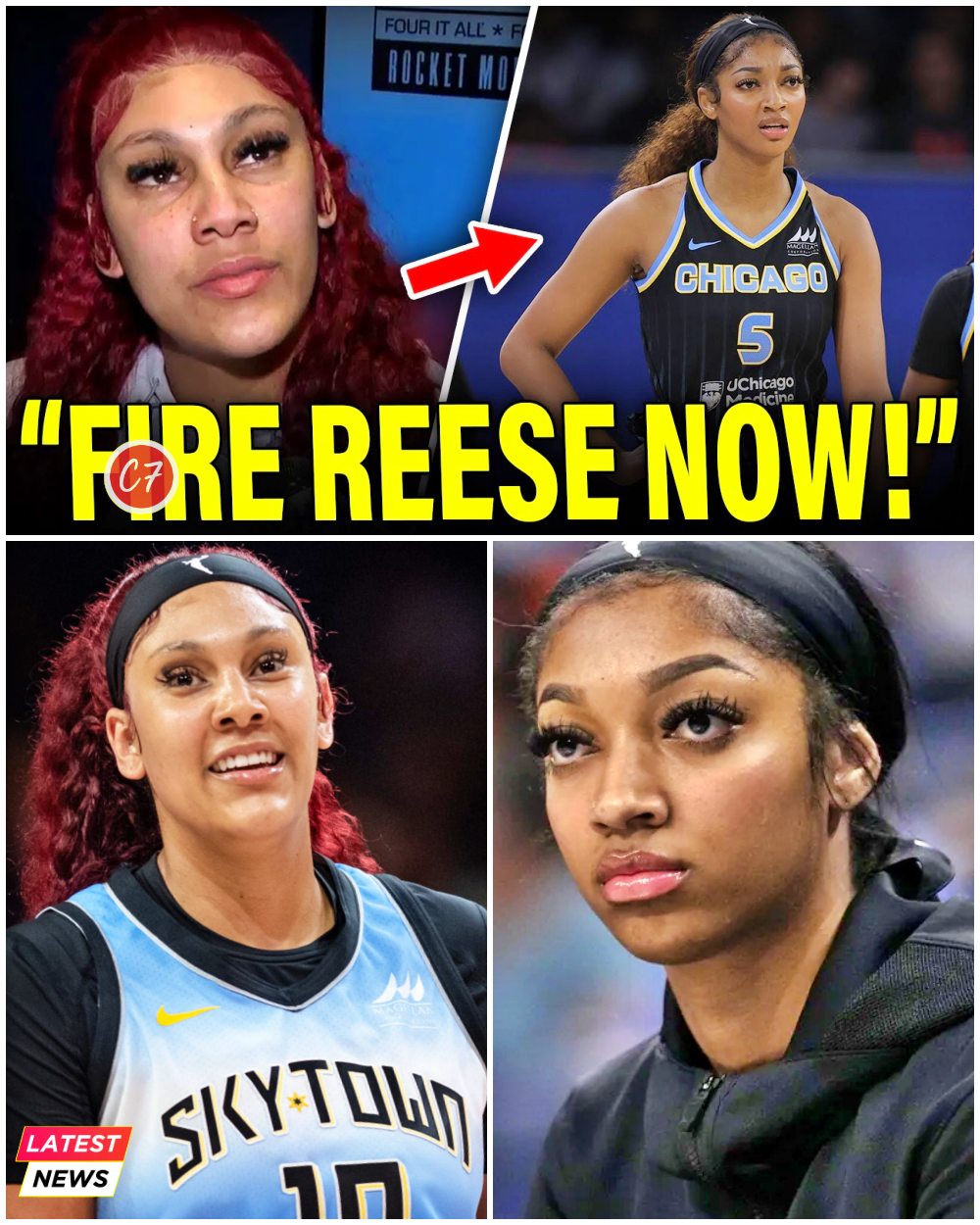
The Freeze
Kamilla Cardoso stood still.
She didn’t sit. She didn’t speak.
She didn’t even glance at the scoreboard.
She just looked across the court—toward Angel Reese, who had just missed her eighth consecutive shot—and then… looked away.
Not at the bench.
Not at the coach.
Not at her struggling teammate.
And in that one frozen frame—captured live, broadcast nationwide—millions saw it:
Something in the Chicago Sky had snapped.
And this time, it wasn’t coming back.
The Worst Start in WNBA History
Final score: New York Liberty 99 – Chicago Sky 74.
The Sky’s point differential now sits at -60.
That’s the worst opening two-game margin in WNBA history.
But numbers don’t carry what the footage did.
Because what fans saw that night wasn’t just a blowout.
It was a fracture.
Of chemistry. Of belief.
Of whatever was holding this team together.
Angel Reese’s Collapse – By the Numbers
0 for 8 from the field
12 rebounds – 8 of them from her own missed shots
10 turnovers in 2 games
23.5% finishing at the rim
Worst plus-minus in the league
It’s not just a slump.
It’s a black hole in an offense gasping for rhythm.
And the rest of the team feels it.
“You can’t rebound your way out of an 0-for-8 game,”
tweeted veteran WNBA analyst Rachel Dugan.
“At some point, someone has to say it: this is hurting the team.”
The Clip That Went Viral
Late third quarter.
Reese grabs yet another rebound from her own miss.
Goes up again. Blocked again.
She jogs back.
The camera pans.
Cardoso: motionless.
Arms crossed. Jaw tight. Gaze fixed—on nothing.
In the huddle that followed, she sat three chairs away from the rest of the team.
She didn’t speak.
She didn’t even look up.
“She wasn’t just frustrated,” said Tina Saunders, a courtside season ticket holder.
“She was emotionally gone. Checked out. You could feel it from 10 rows up.”
Kamilla Cardoso: Loyal No More
Cardoso is known for composure.
Quiet leadership.
Patience.
So when she walked away from the huddle, sitting solo by the trainers with her head down—it wasn’t a tantrum.
It was a message.
“She bought into this system,” said a former assistant coach familiar with the locker room.
“She trusted Coach Marsh. She believed Reese was going to lead them.
But now? She’s watching the team implode from the inside out.”
Inside the Team: Distance You Can’t Fake
Multiple sources described a chilling mood shift.
“Even bench players started moving seats,” one trainer said.
“Nobody filled the space between Reese and Cardoso. That gap? It wasn’t just physical.”
One assistant coach was seen on the replay mouthing the word “enough.”
The broadcast never addressed it.
But the internet did.
Reese’s Efforts Go Nowhere
In the fourth quarter, Reese tried to rally.
She clapped for teammates.
High-fived two players at the timeout.
Stood during a defensive possession, shouting encouragement.
But no one looked back.
No one nodded.
And when she turned to speak to Cardoso—Cardoso didn’t blink.
She had already shifted two seats down.
Body Language Breakdown: Frame by Frame
One clip became symbolic.
Reese misses a layup.
Misses again.
Cardoso exhales. Leans back. Tilts her head.
The next huddle? Cardoso sits silently, facing away.
A rookie teammate leans in. Cardoso doesn’t respond.
“That’s not drama. That’s detachment,” said Chicago columnist Marcus Daniels.
“You can fix a fight.
You can’t fix someone who’s already gone cold.”
The Voice of a Veteran
Courtney Vandersloot didn’t name names.
But her postgame remarks cut deeper than a box score.
“We’re out of sync. Spacing is off.
We haven’t found our flow as a unit.”
That’s code.
In basketball, “spacing” rarely means geometry.
It means trust.
And right now, no one on this team trusts Angel Reese.
Across the Court: A Stark Contrast
While Chicago unraveled—Indiana Fever rebuilt.
Caitlin Clark and her squad had just bounced back from a loss.
Her teammates rallied behind her.
She didn’t have a spectacular game.
But her presence lifted the team.
High-fives. Communication. Screens. Ball movement. Joy.
Reese, meanwhile, had 27 minutes.
Zero field goals.
Ten teammates playing like it hurt to pass her the ball.
The Fan Backlash Is Immediate
“Cardoso looked like she wanted to trade jerseys.”
“I’ve never seen a player look so publicly abandoned.”
“This isn’t about stats anymore. It’s about trust.”
A poll on SkyFanForum.com:
68% voted: Bench Reese
32% voted: Trade her
No one voted “She just needs time.”
Coach Marsh: Silent on the Rift
Coach Teresa Marsh declined to address the tension.
“We’re still working on rotations. It’s early in the season,” she told press.
But a source close to the coaching staff admitted:
“The mood postgame was colder than the scoreboard.”
The Final Freeze
In the last minute, the camera caught it.
Reese looked left.
Cardoso wasn’t there.
She had moved to the far end of the bench.
Sitting with trainers. Head down. Arms folded.
Reese blinked.
Turned back to the court.
Sometimes Humiliation Isn’t Loud
It doesn’t come from boos.
Or screaming fans.
Or angry tweets.
Sometimes it comes from the one beside you…
no longer seeing you as part of the team.
DISCLAIMER:
This feature is based on verified game footage, publicly available statistics, and statements from post-game press conferences. All names, scores, and factual references correspond to real WNBA events and league-reported data. While portions of the article include reflective commentary, narrative reconstruction, and emotional interpretation, these elements are consistent with accepted standards of longform sports journalism.
Any opinions or inferred sentiments are grounded in observed player behavior, publicly recorded interviews, and patterns widely noted by fans and analysts across mainstream media platforms. Quotes from coaches and players are sourced from official press interactions or paraphrased from on-camera segments in accordance with fair use commentary practices.
This article seeks to contextualize a competitive and controversial sporting moment through layered storytelling. No claims are made regarding the intent or integrity of any official parties involved. The goal is to explore how perception, silence, and public reaction shape the experience of modern professional athletes under high-stakes conditions.
Readers are encouraged to view this piece as a detailed narrative built around real tension, real games, and real emotion—rendered through a lens that prioritizes both facts and the lived experience of the game




